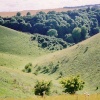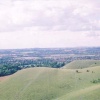Please login or click here to join.
Forgot Password? Click Here to reset pasword
 |  |  |  |  |  |
| Edward Lever Posts: 734 Joined: 22nd Dec 2005 Location: UK | quotePosted at 12:37 on 3rd July 2017 I can see that for you, Andreas, sharpness is the most important factor, but this is a matter of personal preference and the type of photography you do. Personally, I like the shallow depth of field obtainable with a prime at large apertures. I agree that the performance of a prime is often not great wide open, but this can be corrected to some extent using the in-camera lens correction profiles. The comparison with the Sigma 18-35 and lets say the Canon 50mm f/1.8 is of limited use, because the Sigma is an APS-C lens and therefore cannot be used on a full-frame camera. There are faster Canon primes which outgun the Sigma in terms of maximum aperture. |
Andreas Lindberg Posts: 29 Joined: 24th May 2015 Location: Sweden | quotePosted at 21:11 on 3rd July 2017 On 3rd July 2017 12:37, Edward Lever wrote:
1) I completely agree with what you said about personal preference and type of photography. 2) I also like shallow DOF, very much so. But one doesn't necessarily need a prime for that. A constant field of view provided, DOF only depends on the aperture. 3) Correction profiles, either in-camera or in, say, Photoshop can not correct for lack of sharpness. 4) I would not compare those two because they don't share a focal length. The fact that the Sigma is for APS-C is irrelevant for a comparision of lenses on, as I said earlier, the same body. We need to compare apples with apples. 5) That is of course correct and I never claimed otherwise. |
Andreas Lindberg Posts: 29 Joined: 24th May 2015 Location: Sweden | quotePosted at 21:39 on 3rd July 2017 This image was taken with the Sigma 18-35 on the 60D at 18mm and f/1.8.
 Picture by Andreas Lindberg
Edited by: Andreas Lindberg at:3rd July 2017 21:45 |
| Edward Lever Posts: 734 Joined: 22nd Dec 2005 Location: UK | quotePosted at 22:26 on 3rd July 2017 This image of mine is an example of what I mean by the shallow depth of field which makes an image 'pop' from the page. I used a Canon 85mm f/1.8 prime at maximum aperture on a very old Canon 5D for that shot. As for the usefulness of lens correction profiles (either in camera or in photoshop), I agree that sharpness cannot be corrected by this process. However, peripheral illumination drop-off, chromatic aberration and distortion can largely be eliminated by lens profile correction. Perhaps the most important parameter to be corrected with a wide open lens is peripheral illumination (even good quality lenses show significant fall-off in exposure at the edges when used wide open). Andreas, if I may so so, you seem to be obsessed with sharpness, but there are many other factors which contribute to making a good image.
Picture by Edward Lever Edited by: Edward Lever at:4th July 2017 10:00 |
| Rod Burkey Posts: 554 Joined: 2nd Sep 2008 Location: UK | quotePosted at 17:53 on 4th July 2017 “Good” images are a matter of opinion. This is clearly illustrated by the content on POE. My views on this have been aired to death in older posts.in fact it made me "go away" for a while. As for sharpness, I do believe, that in images involving many subjects, sharpness and accurate focus coupled with wise aperture choices, helps considerably. I have, and will continue to strive for what I consider to be the appropriate amount of sharpness, even if that requires post production (heresy!). Post production was used by me in my old darkroom. My new “darkroom” has Photoshop CC and it’s great, and done without a red light. I wish I never felt the need to crop or alter what is stored in my camera, but sadly my exiguous skills have their all too obvious limits. Our choice of which lens to use, is a personal one, be it zooms or, primes or even for the few, pinholes. The result is all that really matters. How you get there is all part of this great medium called photography. These are of course my opinions only. |
| Rod Burkey Posts: 554 Joined: 2nd Sep 2008 Location: UK | quotePosted at 17:56 on 4th July 2017 Oh yes, my answer to the original question is: Not entirely. |
| Edward Lever Posts: 734 Joined: 22nd Dec 2005 Location: UK | quotePosted at 17:37 on 29th August 2017 On 4th July 2017 17:56, Rod Burkey wrote:
The fact that the manufacturers continue to make primes and zooms proves that there is still a demand for both types of lens. A serious amateur will usually acquire a selection of zooms and primes over the years. How they are used depends on the photographer's inclination, skill, and what camera bodie(s) they have at their disposal. Thankfully, no two photographers are alike, otherwise it would all be so predictable. Edited by: Edward Lever at:29th August 2017 19:29 |
| Rod Burkey Posts: 554 Joined: 2nd Sep 2008 Location: UK | quotePosted at 23:48 on 29th August 2017 Well said Edward. To each his own. |
| Rod Burkey Posts: 554 Joined: 2nd Sep 2008 Location: UK | quotePosted at 12:20 on 31st August 2017 It's a shame that the photography forum posts attract almost no response. I suppose they hold no interest, so as the Two Ronnies once said, "It's goodnight from me......" No use flogging a dead horse.
|
| Darrell Evans Posts: 11 Joined: 11th Sep 2018 Location: UK | quotePosted at 18:44 on 12th September 2018 Some interesting points have been made and this subject is like kicking the Hornets nest that is the mirrorless debate. I think Rod has put it well and it all depends on your likes and dislikes. Shoot with what makes you happy aslo it may be a cost issue that makes the lens choice for you. Sharpness is not always the goal your subject may be best soft focused. You may just love the way a lens looks at 2.8 but dislike it a f8. It may be tack sharp, then it goes into photoshop and all the hard work of the manufacurer is gone due to the artists choices. As for the original point of has Hi ISO killed the fast prime I don't think so. People like them and it depends on what you are shooting. Also there is the point of these lenses are expensive due partly to the fact they have better glass. As these Hi ISO cameras get better the quality does as well and this can show faults in a lens that either has people liking or hating it. Thats my take and hope I did not miss your point. Off topic I have read other posts by you Edward and lets hope the photographics topics take off again. |